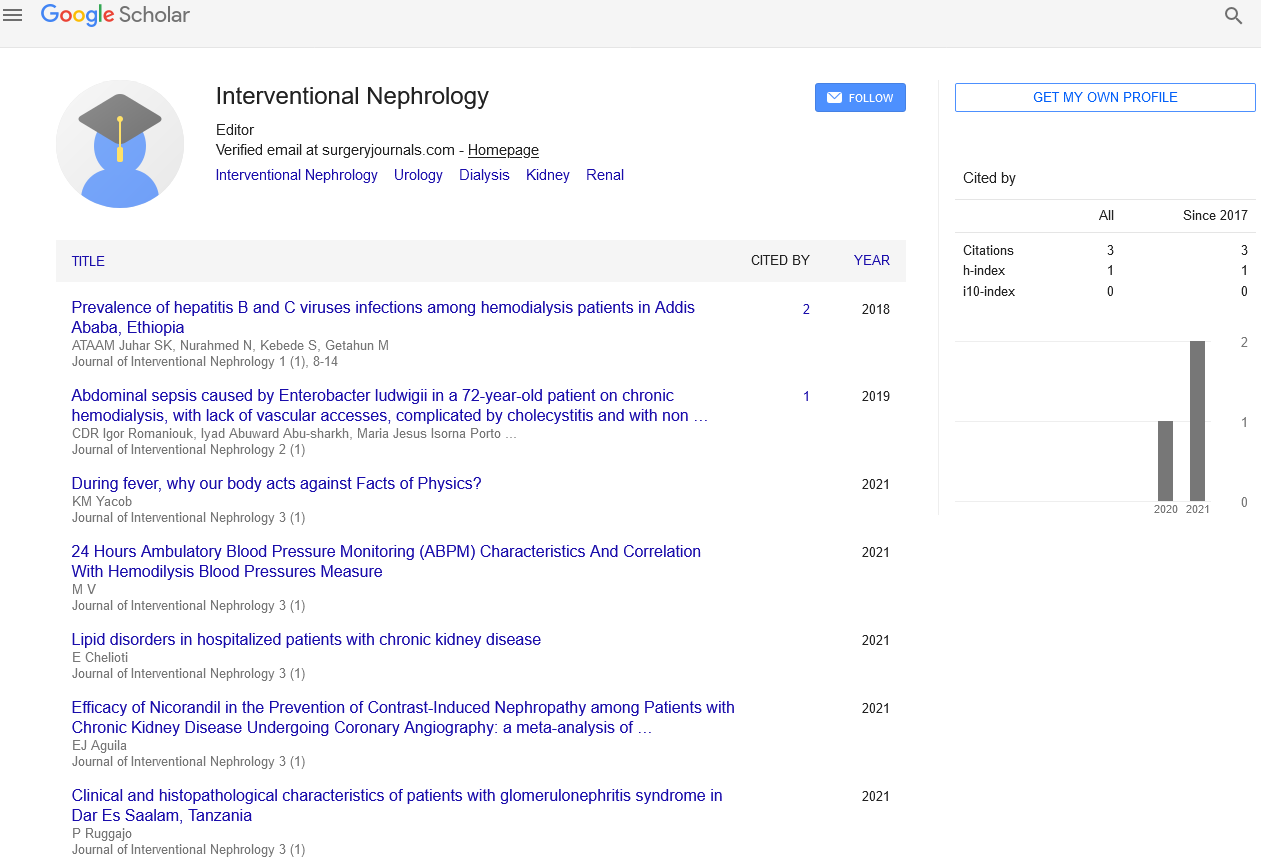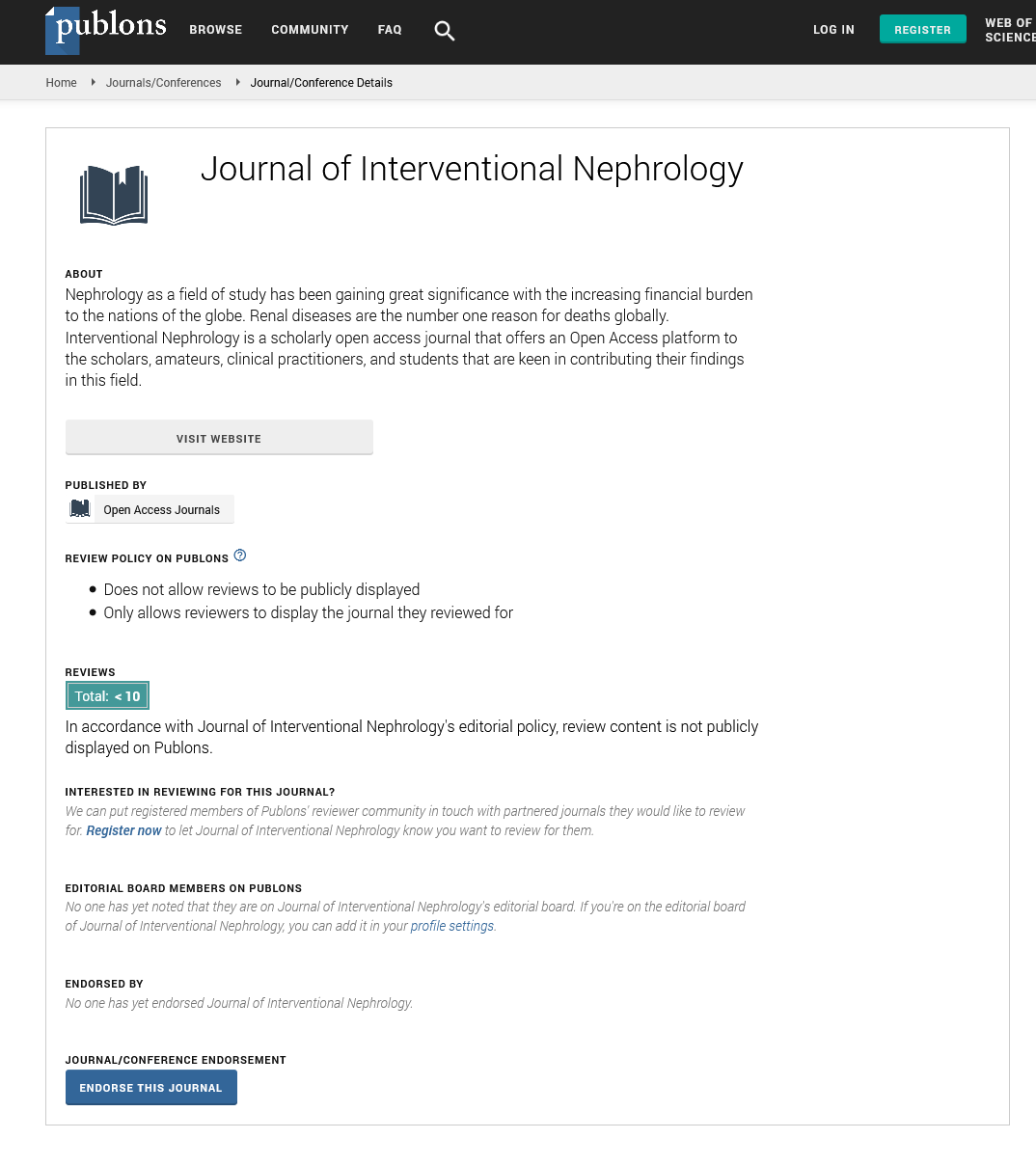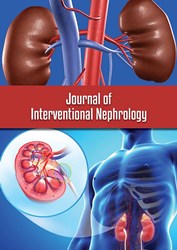Perspective - Journal of Interventional Nephrology (2024) Volume 7, Issue 4
Role of Interventional Nephrology in Acute Kidney Injury Management
- Corresponding Author:
- Shaofeng Tan
Department of Medicine, University of New Haven, Turkey
E-mail: Shaofengtan1000@en.edu
Received: 29-Jul-2024, Manuscript No. OAIN-24-143627; Editor assigned: 31-Jul-2024, PreQC No. OAIN-24-143627 (PQ); Reviewed: 13-Aug-2024, QC No. OAIN-24-143627; Revised: 20-Aug-2024, Manuscript No. OAIN-24-143627 (R); Published: 30-Aug-2024, DOI: 10.47532/oain.2024.7(4).293-294
Introduction
Acute Kidney Injury (AKI) is a critical condition characterized by a rapid decline in kidney function, leading to a significant increase in morbidity and mortality rates. Interventional nephrology has emerged as a crucial discipline in managing AKI, offering both diagnostic and therapeutic strategies that can significantly influence patient outcomes. This article explores the various roles of interventional nephrology in the management of AKI, highlighting its contributions to diagnosis, treatment, and overall patient care.
Description
Understanding acute kidney injury
AKI is defined by a sudden decline in kidney function, typically indicated by a rise in serum creatinine levels or a decrease in urine output over hours to days. It can result from a variety of causes, including prerenal (e.g., hypovolemia), intrinsic renal (e.g., acute tubular necrosis), and postrenal (e.g., urinary obstruction) factors. The complexity and rapid progression of AKI necessitate a multifaceted approach to management, where interventional nephrology plays a pivotal role.
Diagnostic interventions
Percutaneous renal biopsy: One of the cornerstones of interventional nephrology in AKI management is the use of percutaneous renal biopsy. This procedure allows for the direct assessment of renal tissue, enabling accurate diagnosis of the underlying pathology causing AKI, such as glomerulonephritis or interstitial nephritis. High-resolution imaging techniques, such as ultrasound or CT guidance, enhance the precision and safety of this procedure.
Imaging techniques: Advanced imaging modalities, including Doppler ultrasound and CT angiography, play a significant role in evaluating renal blood flow and detecting structural abnormalities. These imaging techniques help identify conditions like renal artery stenosis or thrombosis, which may contribute to AKI.
Therapeutic interventions
Dialysis access and management: In patients with severe AKI, Renal Replacement Therapy (RRT) is often required. Interventional nephrology is instrumental in establishing and maintaining dialysis access, such as Arteriovenous Fistulas (AVFs), Arteriovenous Grafts (AVGs), or Central Venous Catheters (CVCs). Proper management of these access points is crucial for effective dialysis and preventing complications like infections and thrombosis.
Temporary dialysis catheter placement: For patients requiring immediate dialysis access, temporary dialysis catheters can be placed percutaneously. Interventional nephrologists are skilled in the safe and effective placement of these catheters, ensuring prompt initiation of RRT and mitigating the risk of related complications.
Renal replacement therapy techniques: In addition to establishing dialysis access, interventional nephrology contributes to optimizing RRT techniques, including Continuous Renal Replacement Therapy (CRRT) for patients with hemodynamic instability. Interventional nephrologists work to tailor the dialysis prescription, monitor access function, and manage complications associated with RRT.
Management of complications
Management of dialysis-related complications: Interventional nephrologists are adept at addressing complications arising from dialysis access, such as catheter malposition, thrombosis, or infection. Techniques such as catheter exchange, angioplasty, or stenting are employed to restore or maintain optimal access function.
Percutaneous interventions for obstructive uropathy: In cases where AKI is caused by obstructive uropathy, percutaneous nephrostomy can be performed to relieve urinary obstruction. This procedure involves placing a catheter directly into the renal pelvis to drain obstructed urine, thereby alleviating pressure and restoring kidney function.
Patient-centered care
Individualized treatment plans: Interventional nephrologists play a crucial role in developing individualized treatment plans for AKI patients. This involves assessing the specific etiology of AKI, the patient’s overall condition, and potential contraindications to certain interventions.
Multidisciplinary collaboration: Effective management of AKI often requires collaboration between nephrologists, intensivists, radiologists, and other specialists. Interventional nephrologists contribute to this multidisciplinary approach by providing expert input on procedural decisions and coordinating care to address complex patient needs.
Future directions
The future of interventional nephrology in AKI management is likely to be shaped by ongoing advancements in technology and research. Innovations such as real-time imaging, improved biomaterials for dialysis access, and novel therapeutic approaches hold promise for enhancing the effectiveness and safety of interventions. Additionally, emerging biomarkers and personalized medicine approaches may offer new insights into the management and prognosis of AKI.
Conclusion
Interventional nephrology plays a pivotal role in the management of acute kidney injury, encompassing diagnostic procedures, therapeutic interventions, and patient-centered care strategies. By leveraging advanced imaging techniques, optimizing dialysis access, and addressing complications, interventional nephrologists significantly contribute to improving outcomes for AKI patients. As the field continues to evolve, ongoing advancements and interdisciplinary collaboration will further enhance the capabilities and impact of interventional nephrology in AKI management.
In summary, the integration of interventional nephrology into AKI care represents a crucial advancement in nephrology practice, offering innovative solutions and expertise that drive better patient outcomes and elevate the standard of care in managing acute kidney injury.


